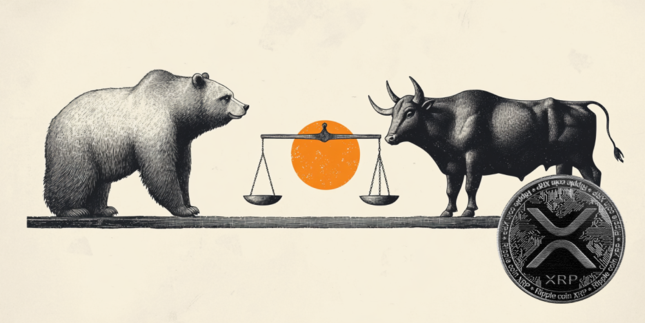The past few weeks have been quite humbling for the crypto market. After months of a downturn and coin prices trying to overcome bearish sentiment from the external economy, things actually did start to look up at the start of November.
Elon Musk bought Twitter, inflation numbers started to reduce, and it seemed like the entire market was gearing up for a big recovery. Then, things went down the drain once more as the FTX saga started to unfold.
How did we get here?
FTX was the second-largest crypto exchange in the market. By every stretch of the word, this company was a giant in the industry, and it was hailed as possibly being in the best position to take crypto into the next phase.
In the middle of the year, as the bear market raged on and companies began to go bust, FTX was right there handing lifelines to them in the form of bailouts and outright purchases. The company was seen as a bastion of proper management, and its chief executive, Sam Bankman-Fried, was hailed as the next JP Morgan.
Then, a report surfaced in September detailing that FTX had been involved in some shady dealings with Alameda Research - a quant trading firm founded by Bankman-Fried. The billionaire had been running both firms, and according to the report, FTX had been loaning billions to Alameda - while the latter had simply been squandering the money on risky bets.
Binance, the largest exchange in the market and FTX’s primary competitor, sensed a feeling of panic. The company, which had interestingly invested in FTX at an early stage, announced that it would start to unload its holdings in FTX’s native token, FTT. At the time, Binance held about $500 million worth of FTT - while the asset’s market cap was just a little over $2 billion.
FTX goes bust
The sale announcement set off a massive panic in the market. FTX’s customers immediately ran to withdraw their funds, with many being scared that the exchange might not be able to fulfil its obligations to them. Binance might have committed to a long-term selloff, but their action set off a chain reaction from which FTX couldn’t recover.
With a liquidity crisis on the way, FTX sought a buyout from none other than Binance. But, even while both parties were on the table, Binance backed out of the deal as FTX’s finances were too bad for the company to step in.
Since then, it’s been one revelation after another. FTX has shut down and filed for bankruptcy, while the company’s customers have been left holding the bag. The exchange was also reportedly hacked, with over $400 moving from its wallets over a weekend. As things stand, there is no way for anyone to recover their funds from FTX. And, the company’s bankruptcy now threatens other firms in the market as it appears to have been too interconnected with the market to fail.
What happens now?
As the fallout continues, the biggest losers in the FTX saga are undoubtedly the customers. The exchange has lost so much money that customers no longer have a recourse. And with FTX’s top brass going to the ground, these people are left with nothing. That brings us to many asking for what could be the right solution. And although industry experts have continued to harp on it, self-custody appears to be the best way.
Self-custody is simple - instead of trusting an exchange or some other centralized party with your funds, you should hold them instead. It is handling your money on your own and taking charge of your finances - just as crypto was initially meant to be.
Today, we have centralized parties controlling the entire crypto landscape. And as these companies continue to grow, customers get increasingly at risk. When Gerald Cotten, the founder of Canadian crypto exchange Quadriga, died in 2018, he was the only one who had access to the exchange’s hot wallets. To date, over $200 million worth of crypto is sitting in the exchange’s hot wallets, with no one able to get it out. Customers have been stranded for years.
Now, with the FTX saga, we’re seeing something similar. Customer funds are gone, with no possible lifeline for them. What happens if another exchange goes tomorrow?
Self-custody has become much more appealing for customers also because custodial wallets are now more functional than they used to be. The OWNR Wallet, for instance, allows you to do more than just send and receive crypto. The platform lets customers purchase crypto with their VISA cards and even has an individual over-the-counter (OTC) service.
Whether you’re an individual investor or a company that has crypto holdings, the OWNR Wallet is a service that you can easily use to get started in the market. And, the best part is that it is entirely free to download.
Self-custody is an existential threat to the powers that be in crypto. Instead of letting some platform hold your money, you can hold it by yourself and get more control over your funds. And, just as well, you get to safeguard your money and ensure that the failure of any centralized entity doesn’t affect you. Basically, the only thing you need to worry about is the state of the market and how it can affect the value of your holdings - not your access to them.
Note: All information on this page is subject to change. The use of this website constitutes acceptance of our user agreement. Please read our privacy policy and legal disclaimer. Opinions expressed at FXstreet.com are those of the individual authors and do not necessarily represent the opinion of FXstreet.com or its management. Risk Disclosure: Trading foreign exchange on margin carries a high level of risk, and may not be suitable for all investors. The high degree of leverage can work against you as well as for you. Before deciding to invest in foreign exchange you should carefully consider your investment objectives, level of experience, and risk appetite. The possibility exists that you could sustain a loss of some or all of your initial investment and therefore you should not invest money that you cannot afford to lose. You should be aware of all the risks associated with foreign exchange trading, and seek advice from an independent financial advisor if you have any doubts.
Recommended Content
Editors’ Picks

Shiba Inu eyes positive returns in April as SHIB price inches towards $0.000015
Shiba Inu's on-chain metrics reveal robust adoption, as addresses with balances surge to 1.4 million. Shiba Inu's returns stand at a solid 14.4% so far in April, poised to snap a three-month bearish trend from earlier this year.

AI tokens TAO, FET, AI16Z surge despite NVIDIA excluding crypto-related projects from its Inception program
AI tokens, including Bittensor and Artificial Superintelligence Alliance, climbed this week, with ai16z still extending gains at the time of writing on Friday. The uptick in prices of AI tokens reflects a broader bullish sentiment across the cryptocurrency market.

Bitcoin Weekly Forecast: BTC consolidates after posting over 10% weekly surge
Bitcoin price is consolidating around $94,000 at the time of writing on Friday, holding onto the recent 10% increase seen earlier this week. This week’s rally was supported by strong institutional demand, as US spot ETFs recorded a total inflow of $2.68 billion until Thursday.

XRP price could renew 25% breakout bid on surging institutional and retail adoption
Ripple price consolidates, trading at $2.18 at the time of writing on Friday, following mid-week gains to $2.30. The rejection from this weekly high led to the price of XRP dropping to the previous day’s low at $2.11, followed by a minor reversal.

Bitcoin Weekly Forecast: BTC consolidates after posting over 10% weekly surge
Bitcoin (BTC) price is consolidating around $94,000 at the time of writing on Friday, holding onto the recent 10% increase seen earlier this week.

The Best brokers to trade EUR/USD
SPONSORED Discover the top brokers for trading EUR/USD in 2025. Our list features brokers with competitive spreads, fast execution, and powerful platforms. Whether you're a beginner or an expert, find the right partner to navigate the dynamic Forex market.